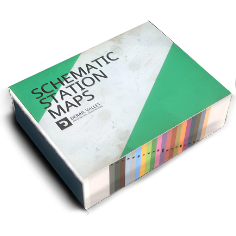Monitoring/it: Difference between revisions
Updating to match new version of source page |
No edit summary |
||
| Line 1: | Line 1: | ||
<languages /> | <languages /> | ||
L'{{pll|Air Brake System Overview|impianto di frenatura ad aria compressa}} può essere monitorato tramite gli appositi manometri, solitamente situati nella {{pll|Rail Vehicle Types|cabina di un'unità di trazione}}. | |||
<div lang="en" dir="ltr" class="mw-content-ltr"> | <div lang="en" dir="ltr" class="mw-content-ltr"> | ||
Revision as of 11:20, 26 April 2025
L'impianto di frenatura ad aria compressa può essere monitorato tramite gli appositi manometri, solitamente situati nella cabina di un'unità di trazione.
Main reservoir pressure should always be at, or near, 8 bar, and it is automatically refilled by the compressor.
Brake pipe operating pressures are between 3.5 bar when the brake is fully applied and 5 bar when it is fully released. Brake pipe pressure is usually represented by a black or white needle on the brake pipe gauge, and its pressure is controlled by the train brake control device.
Brake cylinder pressure goes between 0 and 3.75 bar and represents the actual braking force applied to the wheels. Brake cylinder pressure is usually represented by a red needle on the brake pipe gauge.
Since gauges display pressures relative to the atmospheric pressure, the actual absolute pressures are approximately 1 bar higher than what's indicated on the gauge and used in technical documentation.
